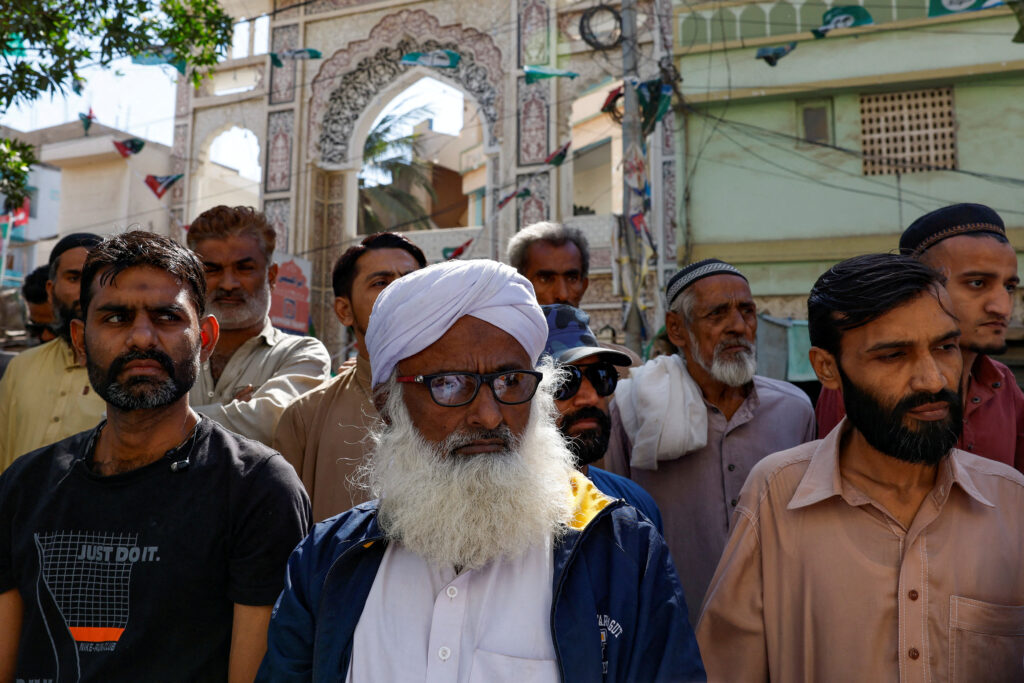After Pakistan’s turbulent election period, the government elected after 8 February 2024 will have to deal with the vexed problem of Pakistan’s foreign debt.
Pakistan’s foreign debt obligations appear modest. By mid-2023, the State Bank of Pakistan estimated it to be US$124.5 billion, or 42 per cent of GDP. This is not high by international standards. But the country’s annual foreign exchange earnings from exports are not enough to pay for imports. During 2022–23, Pakistan’s current account deficit was US$30.5 billion, excluding remittances. Almost 90 per cent of this was covered by remittances of Pakistanis working abroad, and the rest mainly by new foreign borrowing.
Domestic troubles will impede increased export earnings in 2024. For example, textiles are Pakistan’s main export, but textile producers have closed workshops as rising electricity prices reduced their ability to produce for export in 2023. The Federal Investigation Agency’s 2023 crackdown on illegal foreign exchange dealers stabilised the official rupee–US$ exchange rate, but also discouraged Pakistani expatriate workers from repatriating their earnings through formal channels.
With export earnings unlikely to increase, rescheduling foreign debt payments will become an urgent task for Pakistan’s government after the February 2024 elections. The government will have to negotiate with many different stakeholders.
The State Bank of Pakistan’s last quarterly statement identifies these stakeholders. Of the US$128.1 billion foreign debt in September 2023, US$99.1 billion is the foreign debt of Pakistan’s government and state-owned enterprises.
Of this, the government owes US$37.1 billion to multilateral institutions, including the World Bank and Asian Development Bank. This is generally long-term and concessional debt, which is low-interest and repayable over 15 to 30 years in relatively small tranches. Pakistan’s government owes a further US$7.8 billion to the International Monetary Fund (IMF).
Pakistan’s government has also incurred new debt that is not on concessional terms. This generally took the form of selling Sukuk — an Islamic financial certificate — and Eurobonds — a debt instrument in a foreign currency. The new debt amounts to US$7.8 billion, possibly repayable at different terms of 5, 10 and 30 years, but likely at high interest rates.
There are also foreign exchange liabilities as a consequence of arrangements with the banks of Saudi Arabia, the United Arab Emirates and China’s State Administration of Foreign Exchange (SAFE). In recent years SAFE has agreed to help Pakistan by depositing some of their funds into Pakistan’s central bank, as well as some swaps and Special Drawing Rights allocations, making up a total of US$11.7 billion.
Of the remainder, US$18.1 billion is foreign debt held by Pakistan’s banks and private enterprise. That leaves US$37.9 billion of external debt held by Pakistan’s government, of which US$6.1 billion is unspecified ‘commercial loans’ and US$26.1 billion is ‘other bilateral loans’.
Not much is known about the ‘other bilateral loans’. Many may have been extended by financial institutions in China to finance the projects that Chinese companies undertook in Pakistan as part of China’s Belt and Road Initiative. These projects have been part of the bilateral China–Pakistan Economic Corridor (CPEC) infrastructure program since 2014.
The financial details of CPEC are unclear. Pakistan is possibly the world’s largest host of Belt and Road projects, with CPEC expected to involve a US$62 billion spend. The China Global Investment Tracker shows that Pakistan received US$16 billion company investment and US$51.2 billion worth of contracted work from 2005–2023.
In contrast, AidData identified that Pakistan’s cumulative gross debt to China during 2000–2021 was US$67.2 billion, arguing that Pakistan understated its US$45.9 billion worth of cumulative debt to the World Bank.
AidData explains the general reasons why recipient countries underreport their debt to China. One is that the debt reaches a country as foreign direct investment from China, financed as loans to the Chinese-owned companies or subsidiary shell companies that build and initially own and operate the infrastructure projects in recipient countries. In the case of Pakistan, many of these companies are the independent power producers that deliver electricity to Pakistan’s state-owned regional electricity distribution companies.
This construction kept new debt off the loan book of the recipient country’s government. But Pakistan’s government shares responsibility for the foreign debt of the independent power producers. They receive income in Pakistani rupees but are required to service their debt to overseas creditors in foreign currency.
The IMF’s estimate of US$25 billion for Pakistan’s debt service requirements in 2023–24 is based on Pakistan’s reporting of the country’s foreign debt. It is unlikely to account for such developments, even though these co-determine Pakistan’s foreign exchange requirements for debt servicing.
Pakistan’s Central Bank expects a total of US$11.3 billion to be rolled over during 2023–24. And Pakistan’s 2023–24 government budget expects US$1.5 billion from sales of Sukuk and Eurobonds, and US$4.6 billion from new commercial loans.
But that is clearly not enough. In light of the continued negative trade balance, Pakistan’s new government will have to start negotiations to reschedule part of the foreign debt that is due during 2024 as a matter of urgency. China is likely to be a key part of that effort.
Given the current difficulties in China’s financial sector, it may be hard for Pakistan’s negotiators to expect concessions from China. China’s concessions in restructuring Sri Lanka’s debt in October last year would be a reason for guarded optimism, if it was not for the possibility that Pakistan’s debt-related payments to China are likely to exceed those of Sri Lanka.
Pierre van der Eng is Associate Professor at the Research School of Management, the Australian National University.

